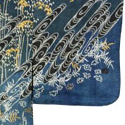|
|
| Show All 203 Results (Text Only) |
|
| Japonisme |
|
| The Metropolitan Museum of Art
|
A brief discussion of the influence of Japanese ukiyo-e woodcut prints on European Impressionist and Post-Impressionist painters of the 19th century. With 12 related artworks.
Go to Museum Resource: http://www.metmuseum.org/toah/hd/jpon/hd_jpon.htm | |
|
|
|
| Jomon Period, ca. 11,000-300 B.C. |
|
| Minneapolis Institute of Arts
|
"The gradual melting of Ice Age glaciers caused the sea level to rise and isolate Japan from the Asian mainland around 11,000 B.C." A brief one-paragraph overview, along with one representative object from the period (an earthenware pot) described by an MIA curator.
Go to Museum Resource: http://archive.artsmia.org/art-of-asia/history/japan-jomon-period.cfm | |
|
|
| Kamakura and Nanbokucho Periods (1185–1392) |
|
| The Metropolitan Museum of Art
|
A brief introduction to the Kamakura and Nanbokucho periods, with a focus on political developments and the shift that occurred in the Japanese aesthetic during this time. With 5 related artworks.
Go to Museum Resource: http://www.metmuseum.org/toah/hd/kana/hd_kana.htm | |
|
|
| Kamakura Period, 1185-1333 |
|
| Minneapolis Institute of Arts
|
"In 1185, Minamoto no Yorimoto proclaimed himself the Shogun (military dictator) of the country and moved the seat of government to Kamakura, a small village in Eastern Japan that gives its name to this historical period." A brief one-paragraph overview, with two objects representative of the period.
Go to Museum Resource: http://archive.artsmia.org/art-of-asia/history/japan-kamakura-period.cfm | |
|
|
| The Kano School of Painting |
|
| The Metropolitan Museum of Art
|
A brief overview of the Kano school, established by Kano Masanobu (1434-1530). Prominent for more than 300 years, the Kano school is considered to be the "longest lived and most influential school of painting in Japanese history." Closely associated with their powerful patrons, the Tokugawa shogunate, the Kano school prospered throughout the Edo period. With 3 related artworks.
Go to Museum Resource: http://www.metmuseum.org/toah/hd/kano/hd_kano.htm | |
|
|
| Kimono |
|
| Victoria and Albert Museum
|
"Japan has a very rich textile history, a major focus of interest and artistic expression being the kimono. Meaning 'the thing worn,' the term kimono was first adopted in the mid-19th century." A special feature about the kimono, with in-depth discussions of the kimono's history, production (weaving, dyeing, embroidery), and decoration (symbols and motifs), plus 51 kimonos from the V&A's collection.
Go to Museum Resource: http://www.vam.ac.uk/page/k/kimono/ | |
|
|
| The Kitano Tenjin Engi Emaki |
|
| The Metropolitan Museum of Art
|
A multimedia learning website about a 13th-century Japanese handscroll that illustrates the legends of the Kitano Shrine (Kitano Tenjin Engi). Included are a short introduction to the Kitano Tenjin Engi Emaki and audio introduction to the pieces.
Go to Museum Resource: https://www.metmuseum.org/art/collection/search/45428 | |
|
|
|
| Show All 203 Results (Text Only) |









